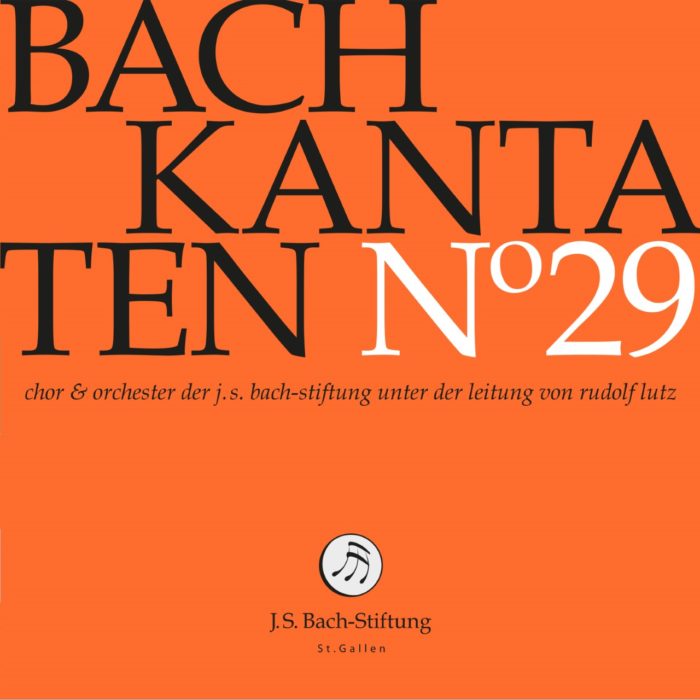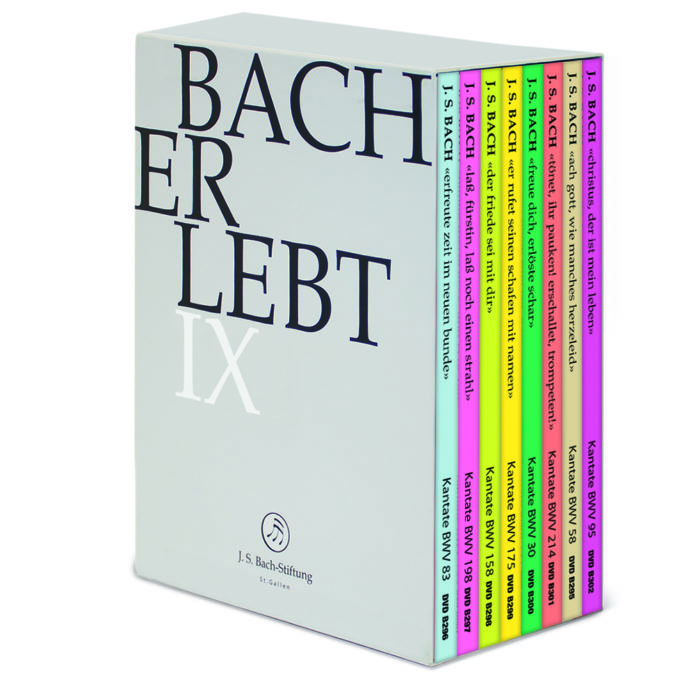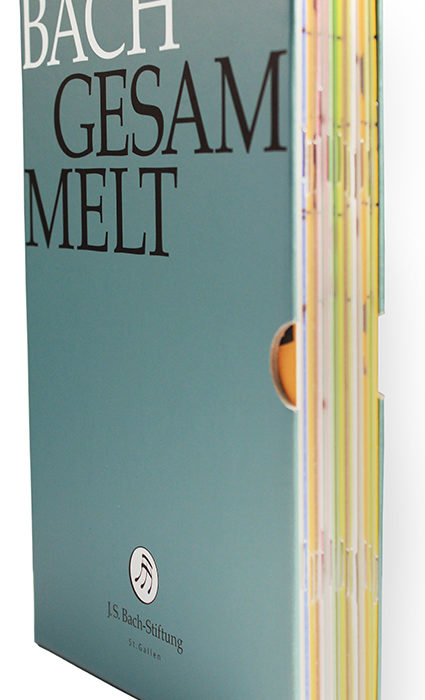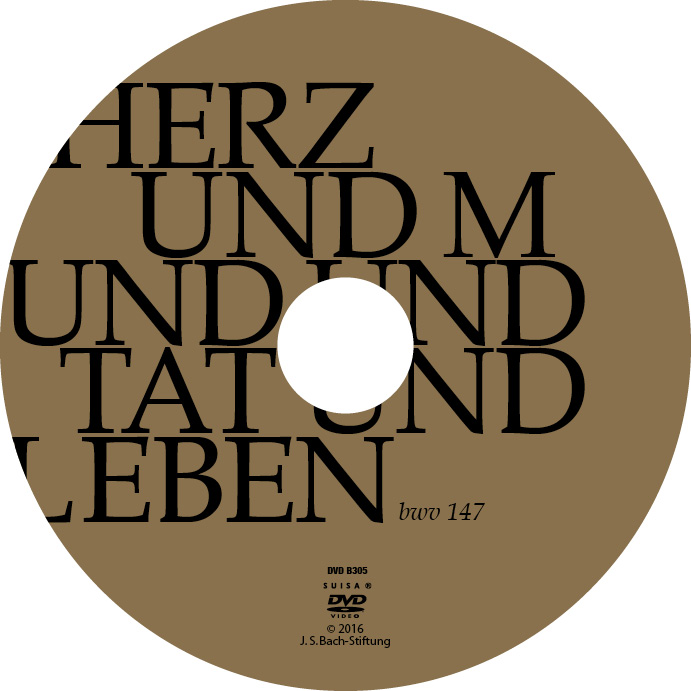Herz und Mund und Tat und Leben
BWV 147 // For the Visitation
(Heart and mouth and deed and living) for soprano, alto, tenor and bass, vocal ensemble, tromba, oboe I+II, oboe d’amore, oboe da caccia I+II, strings and basso continuo
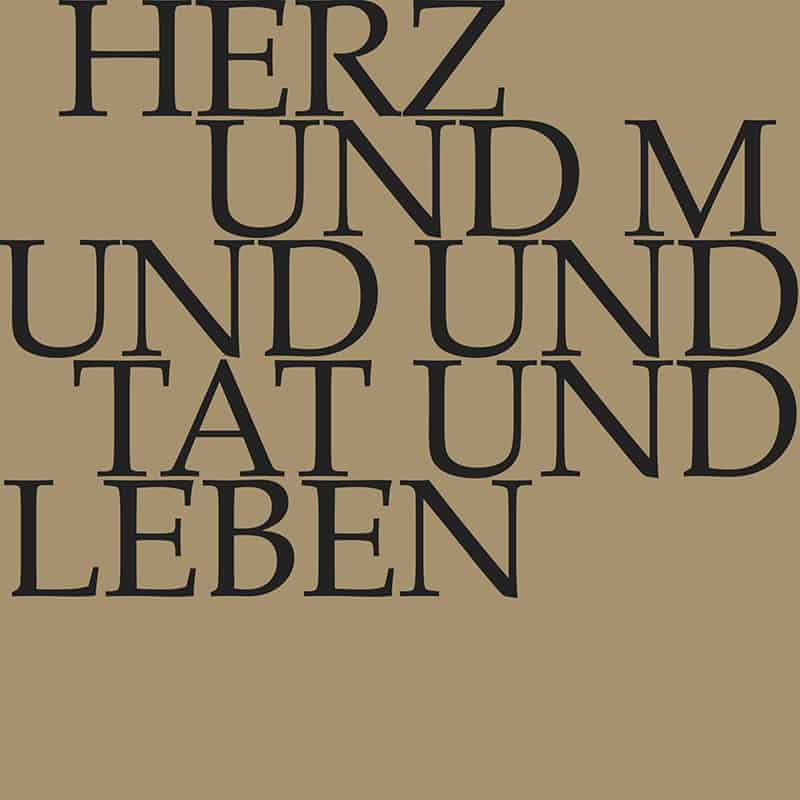
Would you like to enjoy our videos ad-free? Subscribe to YouTube Premium now...
Workshop
Reflective lecture
Bonus material
Choir
Soprano
Susanne Seitter, Olivia Fündeling, Mirjam Berli, Noëmi Tran Rediger, Lia Andres, Gunta Smirnova
Alto
Jan Börner, Misa Lamdark, Liliana Lafranchi, Francisca Näf, Damaris Rickhaus
Tenor
Marcel Fässler, Walter Siegel, Nicolas Savoy, Tobias Mäthger
Bass
Fabrice Hayoz, Philippe Rayot, Tobias Wicky, Valentin Parli, Daniel Pérez
Orchestra
Conductor
Rudolf Lutz
Violin
Renate Steinmann, Monika Baer, Yuko Ishikawa, Eva Saladin, Olivia Schenkel, Anita Zeller
Viola
Susanna Hefti, Matthias Jäggi, Martina Zimmermann
Violoncello
Martin Zeller, Bettina Messerschmidt
Violone
Iris Finkbeiner
Oboe
Kerstin Kramp, Andreas Helm
Oboe d’amore
Kerstin Kramp
Bassoon
Susann Landert
Tromba da tirarsi
Patrick Henrichs
Organ
Nicola Cumer
Harpsichord
Thomas Leininger
Musical director & conductor
Rudolf Lutz
Workshop
Participants
Karl Graf, Rudolf Lutz
Reflective lecture
Speaker
Judith Wipfler
Recording & editing
Recording date
18/12/2015
Recording location
Trogen AR (Schweiz) // Evangelische Kirche
Sound engineer
Stefan Ritzenthaler
Director
Meinrad Keel
Production manager
Johannes Widmer
Production
GALLUS MEDIA AG, Switzerland
Producer
J.S. Bach Foundation of St. Gallen, Switzerland
Librettist
Text No. 1, 3, 5, 7
Salomo Franck
Text No. 6, 10
Martin Jahn, 1661
Text No. 2, 4, 8, 9
Poet unknown
First performance
The Visitation of the Blessed Virgin Mary,
2 July 1723
In-depth analysis
The cantata “Herz und Mund und Tat und Leben” (Heart and mouth and deed and living), written for the Fourth Sunday in Advent in 1716, was the last sacred composition Bach composed during his tenure in Weimar. Because Leipzig’s stricter rules on fasting meant that no figural music was performed between the First Sunday in Advent and Christmas morning, Bach rededicated the cantata for the Visitation of the Blessed Virgin Mary and performed it in its new, extended version for the first time on 2 July 1723. It was during this reworking that Bach added his famous chorale, best known under its English title “Jesu, Joy of Man’s Desiring”, which today is one of the master’s most frequently arranged works.
The opening chorus commences with fanfares of joyful anticipation. These are then interspersed throughout the series of imitative choral entries to concertante effect, and a brief, reflective interjection (“ohne Furcht und Heuchelei” – Without fear and falsity) is quickly integrated in the energetic setting. A second, harmonically charged presentation of the text then segues into an exemplary fugal exposition that leads the movement towards its brilliant conclusion. Although nominally in dacapo form, the movement is more a free rondo setting featuring a youthful combination of trumpet concerto, vocal fugue and choral aria.
Accompanied by shimmering strings, the tenor recitative expands on the notion of “bearing witness” from the introductory chorus; these words refer to Mary’s song of praise in the Magnificat, which the soloist presents as a liberating example in contrast to the impenitent silence of those of little faith. Indeed, compared with Mary’s submission, such reluctance to express faith is sinful inaction that will lead to an “awesome judgement” – an interpretation that addresses the expectation of the last days in the original conception of Advent. Fittingly, the orchestral accompaniment swells with dramatic tension, while the weighty pedal point in the continuo conclusion intensifies the threatening mood.
The following alto aria nonetheless proffers a gentle and inviting reminder: “Be ashamed, O spirit, not; This thy Saviour to acknowledge.” While the mild key of A minor provides a fitting tonality, the oboe d’amore lends a sonorous voice to the soloist’s words of encouragement. Expressed with such forbearance, even the threat of being denied by Christ on Judgement Day seems nought but a friendly payment reminder with a generous grace period…
The next movement, however, marks a considerable shift in tone – paraphrasing the “Deposuit potentes” verse from the Magnificat, the bass recitative provides a reminder that the mighty, too, will be thrust from their thrones by the Highest, while the meek and humble will be raised by his strong arm. In an arioso passage, this is taken as an opportunity to turn wholeheartedly to the approaching Saviour – a vision that is underscored by the quaver figures of the continuo part.
But Bach has yet to exhaust his box of musical tricks – over an ostinato-like quaver line in the continuo, the concertante violin in the soprano aria presents a dreamlike cantilena of industrious triplets that ideally paves the way for the vocalist in the same way that the text envisions the meeting between Saviour and faithful soul. In this touching miniature, grand appearance and simple humility meld to create a beatific, enraptured image of Mary that, in its Handelesque presence and lightness, captivates every listener.
Part one of the cantata then closes with the serene, flowing line of the G major chorale; the text is taken from a hymn of 1661 by Martin Jahn that is otherwise not well known. As in a “Dance of the Blessed Spirits” long before Gluck’s ballet interlude, the weight of the world disappears and we gain a glimpse of how life might be if humans could approach each other in a spirit of friendship, without artifice and fear. Here, the instrumental voices and choir meld into one body of music in a motion that could not seem more natural.
After the sermon, part two of the cantata commences with a tenor aria that centres around the cry of “Hilf, Jesu hilf!” (Help, Jesus, help) – the very shortest of all prayers, and one which Bach, too, wrote at the top of his cantata scores (Jesu Juva) before he began to compose. Here, the pithy head motive of the continuo, divided between an instrumental line and triplet figures on the two keyboard instruments, develops into effortless, elegant coloraturas.
The alto recitative then extols the wondrous power and mysterious ways of the Almighty that inspired the unborn John the Baptist to a testimony of faith. Textually, this verse on the visitation of Mary to Elizabeth highlights the new occasion of the cantata; musically, the murmurs of the two oboes da caccia, suggestive of Christmas, make it possible for us to experience the Magnificat as a heartfelt prophesy that remains inspiring to this day.
The trumpet returns in the bass aria, providing a counterbalance to the victorious drive of the sabre-rattling orchestra and the continuo squadrons. The heroic bass part of this defiant, annunciatory aria is well-suited to this imagery; the way this brief setting condenses towards the end is of great declamatory mastery. A reply is then given by the equally relieved and heartfelt affirmation of the repeated chorale – indeed, seldom have listeners so longed for a reprise than in this cantata, whose rich preceding movements serve to bring out the full effect of this glorious setting.
Libretto
Erster Teil
1. Chor
Herz und Mund und Tat und Leben
muß von Christo Zeugnis geben
ohne Furcht und Heuchelei,
daß er Gott und Heiland sei.
2. Rezitativ accompagnato (Tenor)
Gebenedeiter Mund!
Maria macht ihr Innerstes der Seelen
durch Dank und Rühmen kund;
sie fänget bei sich an,
des Heilands Wunder zu erzählen,
was er an ihr als seiner Magd getan.
O! menschliches Geschlecht,
des Satans und der Sünden Knecht,
du bist befreit
durch Christi tröstendes Erscheinen
von dieser Last und Dienstbarkeit!
Jedoch dein Mund und dein verstockt Gemüte
verschweigt, verleugnet solche Güte;
doch wisse, daß dich nach der Schrift
ein allzu scharfes Urteil trifft.
3. Arie (Alt)
Schäme dich, o Seele, nicht,
deinen Heiland zu bekennen,
soll er dich die Seine nennen
vor des Vaters Angesicht!
Doch wer ihn auf dieser Erden
zu verleugnen sich nicht scheut,
soll von ihm verleugnet werden,
wenn er kömmt zur Herrlichkeit.
4. Rezitativ (Bass)
Verstockung kann Gewaltige verblenden,
bis sie des Höchsten Arm vom Stuhle stößt;
doch dieser Arm erhebt,
obschon vor ihm der Erden Kreis erbebt,
hingegen die Elenden,
so er erlöst.
O hochbeglückte Christen,
auf, machet euch bereit,
itzt ist die angenehme Zeit,
itzt ist der Tag des Heils: Der Heiland heißt
euch Leib und Geist
mit Glaubensgaben rüsten,
auf, ruft zu ihm in brünstigem Verlangen,
um ihn im Glauben zu empfangen.
5. Arie (Sopran)
Bereite dir, Jesu, noch itzo die Bahn,
mein Heiland, erwähle
die gläubende Seele
und siehe mit Augen der Gnaden mich an.
6. Choral
Wohl mir, daß ich Jesum habe,
o wie feste halt ich ihn,
daß er mir mein Herze labe,
wenn ich krank und traurig bin.
Jesum hab ich, der mich liebet
und sich mir zu eigen gibet;
ach drum laß ich Jesum nicht,
wenn mir gleich mein Herze bricht.
Zweiter Teil
7. Arie (Tenor)
Hilf, Jesu, hilf, daß ich auch dich bekenne,
in Wohl und Weh, in Freud und Leid,
daß ich dich meinen Heiland nenne
im Glauben und Gelassenheit,
daß stets mein Herz von deiner Liebe brenne,
hilf, Jesu, hilf!
8. Rezitativ (Alt)
Der höchsten Allmacht Wunderhand
würkt im Verborgenen der Erden.
Johannes muß mit Geist erfüllet werden,
ihn zieht der Liebe Band
bereits in seiner Mutter Leibe,
daß er den Heiland kennt,
ob er ihn gleich noch nicht
mit seinem Munde nennt,
er wird bewegt, er hüpft und springet,
indem Elisabeth das Wunderwerk ausspricht,
indem Mariae Mund der Lippen Opfer bringet.
Wenn ihr, o Gläubige, des Fleisches Schwachheit merkt,
wenn euer Herz in Liebe brennet,
und doch der Mund den Heiland nicht bekennet,
Gott ist es, der euch kräftig stärkt,
er will in euch des Geistes Kraft erregen,
ja, Dank und Preis auf eure Zunge legen.
9. Arie (Bass)
Ich will von Jesu Wundern singen
und ihm der Lippen Opfer bringen,
ich will von Jesu Wundern singen.
Er wird nach seiner Liebe Bund
das schwache Fleisch, den irdschen Mund
durch heilges Feuer kräftig zwingen.
10. Choral
Jesus bleibet meine Freude,
meines Herzens Trost und Saft,
Jesus wehret allem Leide,
er ist meines Lebens Kraft,
meiner Augen Lust und Sonne,
meiner Seele Schatz und Wonne;
darum laß ich Jesum nicht,
aus dem Herzen und Gesicht.



